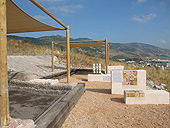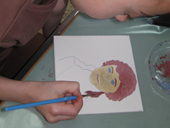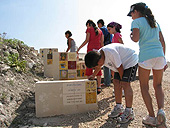Archaeological sites are subject to processes of destruction and weathering. These begin immediately upon the site’s exposure in the excavation and eventually lead to the loss of its tangible values. Many of the archaeological sites are located within the precincts of local authorities and are subject to their planning and development boards. Despite this jurisdiction, most local authorities have no defined strategy for maintaining and displaying the sites, and therefore many of them are neglected and exposed to further damage and disintegration. Sustainable conservation of archaeological sites defines the importance of a ‘place’ and requires a combination of strategies in three main processes:
1. Conservation process: makes it possible to identify a ‘place’ of importance, expose it, give expression to it and strengthen its values;
2. Tourism development process: allows the community and stakeholders to use the ‘place’ and enjoy its different values;
3. Community involvement process: allows the community to recognize the values of the ‘place’, understand their importance, development a sense of local pride and connection to the place, and eventually be responsible for it. In recent years the Israel Antiquities Authority, in conjunction with the city of Yoqneʽam, has implemented a process of sustainable development and conservation of Tel Yoqneʽam. The process, known as “Adopt a Site”, has been carried out in cooperation with the community since 2007, during the course of which the archaeological remains were conserved, information stations were opened and visitor paths were prepared. All of the fourth grade pupils in elementary schools participated in the process. Each of the pupils left his personal mark there in the form of a ceramic tile incorporated in the signage on the tell. Thus a personal connection was created between the participant and the place and its values, and in that way he also contributes to protecting the place and preserving its future.













